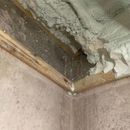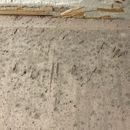Damp and Moldy Concrete Walls
A couple of weeks ago we noticed significant mold on the ceiling and concrete walls of the wine room of our new house (Moved in 18 months ago, concrete walls were poured in spring 2018). The wine room is located under the front portico.
I’ve not or not yet been able to find a leak of any sort. It appears to be dampness coming through the poured concrete foundation. Running a dehumidifier constantly will maintain about 30% RH but as soon as it turns off the RH will begin to rise about 3-5% per hour to about 65% RH. This even after numerous days of it running constantly. Outside temps have largely been below 32°f though have occasionally gone above freezing.
How normal is it for poured concrete walls to be wet? Should I expect that they’d remain dry?
Likelihood that other concrete walls have mold? (Others are all finished w/ wood studs and closed cell foam).
Possibly solutions?
GBA Detail Library
A collection of one thousand construction details organized by climate and house part












Replies
More photos. IR Image of north wall. Wall to left is interior, wall to right is exterior facing east. Also monitor showing CO2 levels in the room. As of this morning CO2 is about 3400 ppm. Backfill was mostly sand/silt/clay so should not have any organic matter and thus CO2 is likely from mold growth?
Build photos:
More build photos. Hopefully these provide some idea how this thing is constructed.
W,
The concrete will continue to wick moisture from the soil. If you installed open cell foam on the ceiling/roof, it will hold quite a bit of moisture as well. If it were my house, I would run the dehumidifier 24/7. FWIW, I had a similar porch room in an earlier house, and it required constant conditioning and vigilance. From you photo, it looks like the porch is about the same size as the footprint of the wine room. It would be better if the porch was large enough to protect the room from regular wetting.
W. Ramsay,
I've designed and built a couple of wine rooms. The strategy I've found works best is to fully insulate them from both the outside, and the rest of the house. That makes the walls much safer, and also makes it easier to condition the space so that it maintains the constant temperature the wine requires.
Thanks. Insulation is all closed cell.
The finished portico roof is about 28" wider (14" per side) and 8" deeper than the stoop and so about 44" wider than the room. The stoop stays quite dry unless heavy easterly winds during a rain storm. This is also Minnesnowta where we'll soon have spring snow melt so the ground will be quite saturated for a few weeks.
Dampness in a wine room is a feature, not a bug. Wine should be stored at a constant temperature of about 50 degrees and humidity of about 80%-90% to help preserve the corks. Unfortunately, those conditions also support mold growth, so construction with mold-tolerant materials is recommended. For a great writeup about wine rooms, see the BSC article:
https://www.buildingscience.com/documents/insights/bsi-010-wine-cellars
This definitely appears to be moisture entering through the poured concrete walls. Even when we keep the RH to about 25% @ 68°f we see what appears to be continued mold growth (based on erratic and very high CO2 levels).
Our builder wants to do 2x4 walls and then do froth-pack closed cell to seal the walls & ceiling. I assume then either just sheet rock or plastic vapor barrier + sheetrock. I'm guessing that this will result in more moisture in the concrete walls (and more mold?) which isn't necessarily very good. But a reasonable solution (vs digging the whole thing out and redoing the exterior moisture barrier)?
Currently the water/moisture in the walls dries to the inside. Where will it go if the inside is sealed up? Can the inside really be sealed up enough to prevent moisture/mold from entering?
@Peter, great article. I read it soon after you posted and forgot to thank you earlier.
Thanks,
One other concern is the risk of doing the spray foam inside a home that we are living in. Can VOC's from the application be exhausted OK? Will VOC's get embedded in fabrics and other materials?
It's not uncommon for concrete walls to retain some moisture, especially if there's no visible leak. However, the rate at which the humidity rises seems a bit concerning. Have you considered consulting a professional to assess the situation? They can identify the source of the dampness and suggest appropriate remedies. As for other concrete walls, since they have different construction materials, the likelihood of mold might be lower, but it's always good to keep an eye out. If you need any assistance or advice, you might consider reaching out to a mortgage broker in Hornsea https://hullmoneyman.com/mortgage-broker-in-howden/ for guidance.